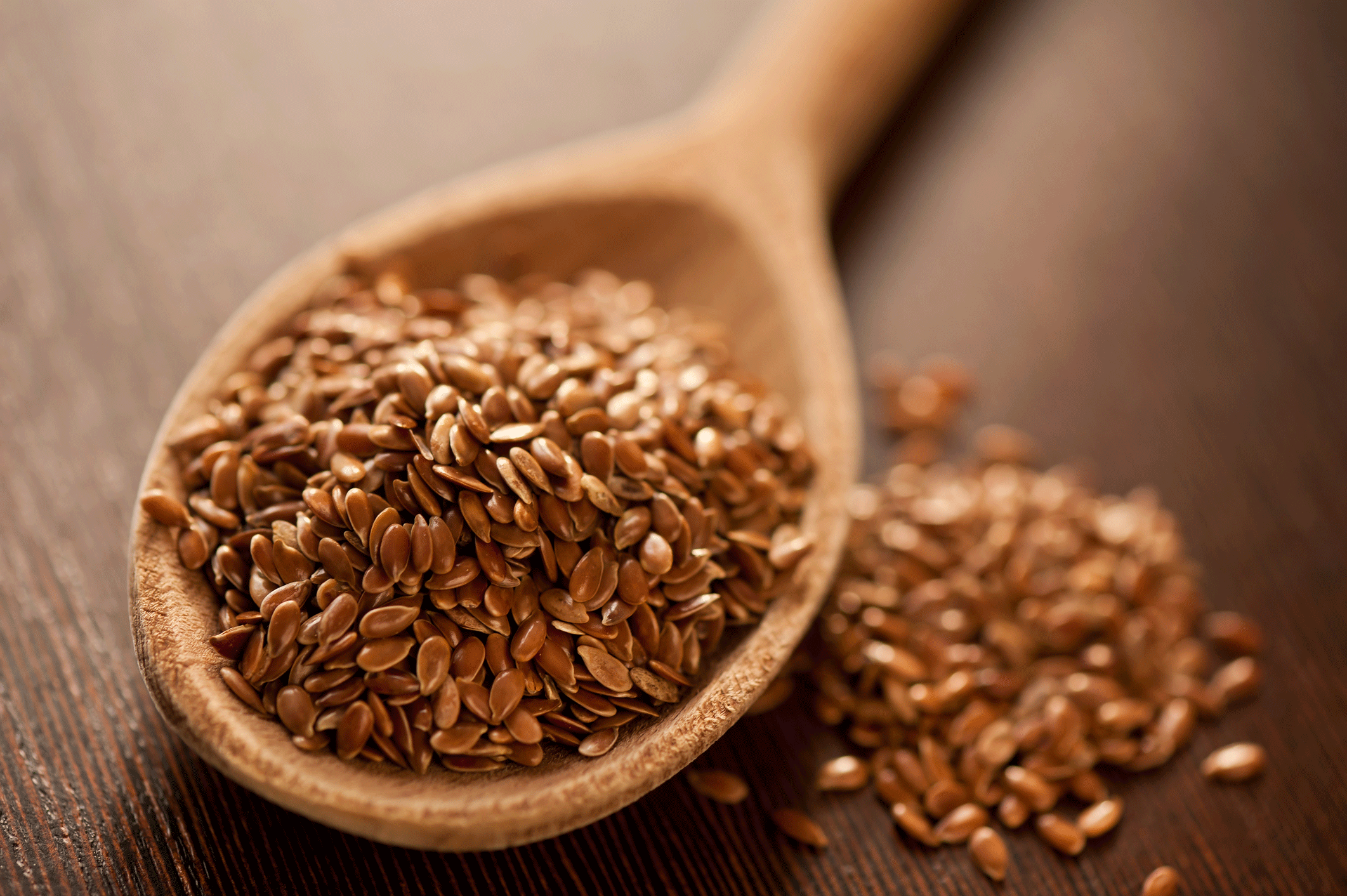Flax Seed Benefits Are Real

The plant that gave us linen and linoleum also gives us a nutritious seed. Flax seed benefits include protection against heart disease, cancer, and diabetes.
What is flax seed?
Flax is a crop plant, one of the world’s oldest. It is native from the Mediterranean east to India. Linen cloth is made from flax fibers. Linseed oil and linoleum are made from its seed.
But it’s only been fairly recently that flax seed became widely available in juice shops in cities to boost your smoothie. It’s the latest superfood — for good reason.
YOU MIGHT ALSO LIKE: Are Sunflower Seeds Good for You?
Flax seed benefits
When you hear about flax seed nutrition, the focus tends to be on omega-3 fatty acids. But just one tablespoon also offers more than a gram of protein, almost two grams of fiber, and plenty of vitamin B, calcium, iron, and other minerals.
Many people get their omega-3 from fish, but if you’d rather stick to plants, you’ll need flax seed, which provides alpha-linolenic acid (ALA), an essential fatty acid your body must get from food. Diets that include more ALA seem to lower your chance of a heart attack. You’ll also have a lower risk of stroke.
The seeds are a bountiful source of lignans, which are linked to lower risk of breast cancer in women and possibly lower risk of colon and skin cancer.
Flaxseed’s helpful dose of fiber includes soluble fiber, which slows down digestion and may help to lower cholesterol, and also insoluble fiber, which helps prevent constipation.
Studies have found that consuming three tablespoons of flax seed daily cut total cholesterol by 7 to 17 percent. Other research on flax seed nutrition found that it lowers blood pressure by enough to reduce your chance of death by stroke or heart disease by around 10 percent.
Flax seed is a healthful protein that can fill you up, possibly as much as a meat-based meal.
The seed may also lower blood sugar levels.
How to eat flax seed
It’s best to eat seeds that are ground up, and keep them refrigerated. Flax seed “meal” often adds protein to vegetarian dishes and can help you produce gluten-free or Paleo grain-free substitutes of common dishes.
Add a tablespoon to cereal, granola, smoothies, or yogurt for breakfast.
You can add them to many batters — pancakes, cookies, muffins, and breads you bake at home.
Instead of breadcrumbs, put flax seed into meatloaf or hamburger. Flax seed will up the protein content in a veggie burger or loaf, perhaps based on beans or quinoa.
You can also add it to beef up hummus.
Almond flour mixed with ground flax seed provide chewiness and bulk in Paleo versions of unbreaded chicken tenders and flourless banana bread muffins.
You can also use flaxseed oil for salad dressing, though it’s not ideal for cooking.
Once you get used to it, you’ll find it is not hard to work flax seed into your life. There are at least four cookbooks dedicated to helping you feed your family flax seed. Or you can keep things simple and just sprinkle it on your smoothies.
Updated:
April 09, 2020
Reviewed By:
Janet O’Dell, RN